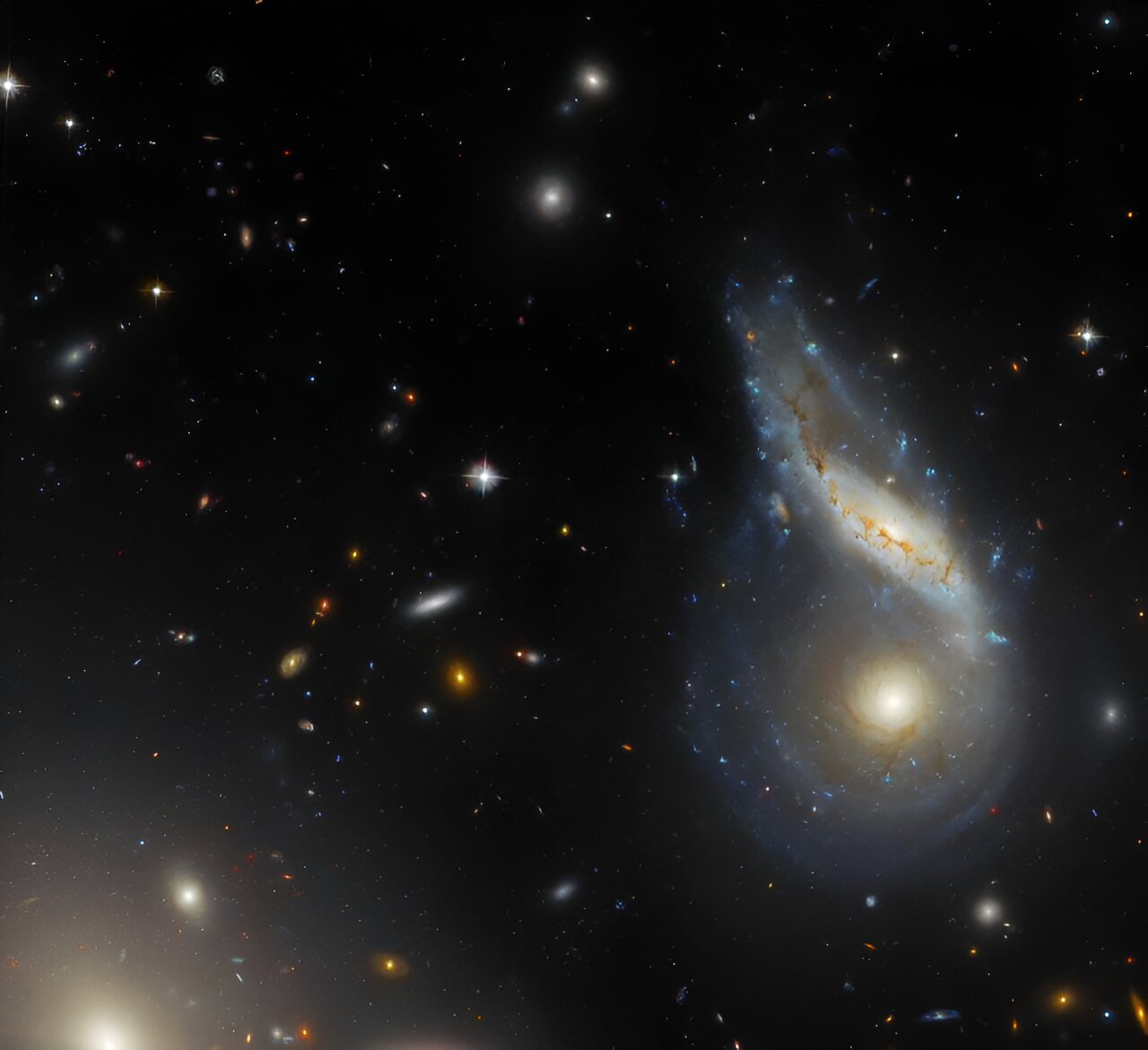
Hubble captures new photo showing merger of two galaxies
The new image captured by the Hubble Space Telescope depicts an exciting snapshot of a galactic collision, illustrating the dynamic process of two galaxies merging. At first glance, it appears to be a single galaxy, but in reality, it is two distinct galaxies—NGC 6040 and LEDA 59642—engaged in a spiral "dance." The object is situated at a safe distance, approximately 570 million light-years away from Earth.
This event represents a protracted process unfolding over a slow time interval. For instance, our own Milky Way is expected to collide with the neighboring Andromeda Galaxy (M31), but this encounter is projected to occur in about 4 billion years. The collision captured in this image, considered a typical case, may take millions of years to complete. The vast distances in space contribute to the prolonged nature of such events.

Galaxies are clusters of stars, solar systems, dust, gas, and dark matter. During galactic collisions and mergers, gravitational forces act on these components, causing changes in their structure and form. It is through these processes that galaxies acquire new shapes or merge entirely, creating new formations. A similar transformation is anticipated for the objects involved in the collision depicted in this image.
Galaxies resulting from mergers typically adopt an elliptical structure, as the merging process disrupts the more complex structures characteristic of spiral galaxies. The galaxy Arp 122 is likely to exhibit a similar structure after the completion of its collision. However, observing this transformation in its entirety will require a considerable amount of time.
- Related News
- Wheel of Death: new method will help astronauts stay fit in low gravity
- Due to anomalies of Orion spacecraft, lunar exploration program may be delayed for years։ NASA
- TAO Observatory: World's highest telescope to study evolution of galaxies and exoplanets
- Powerful M9.5 solar flare causes radio blackout in Pacific Ocean
- What will happen to the Earth if the Moon disappears?
- Key to conquering the Red Planet: Why is NASA studying solar storms on Mars?
- Most read
month
week
day
- Digital Julfa Network is launching a pan-Armenian centre in the metaverse, on the Fastexverse virtual platform 907
- Sparkles: Boston Dynamics unveils a furry robot dog that can dance (video) 793
- Xiaomi unveils exclusive Redmi Note 13 Pro+ dedicated to Messi and Argentina national team 790
- Is there a ninth planet in the solar system? Scientists find new evidence 670
- Smartphone catches fire in child's hand in Russia 655
- What will happen to the Earth if the Moon disappears? 645
- How to understand how protected a smartphone is from water and dust? 636
- World's largest 3D printer was created in USL It prints 29 meter-long structures 620
- iPhone 16 may get colored matte glass back panel, 7 colors 610
- New iPad Pro to receive M4 chip and to be more powerful than Apple computers 609
- Archive
